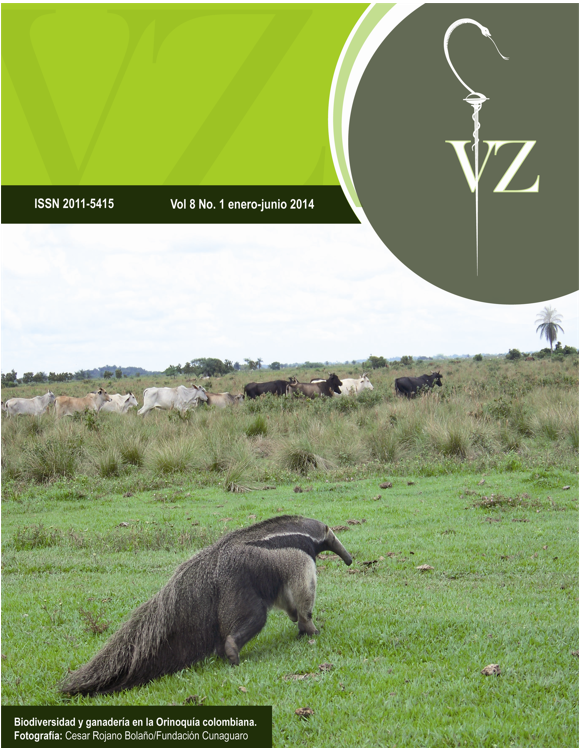Authors
Abstract
ABSTRACT: Canine Brucellosis is a zoonotic disease caused by Brucella canis that affects canines’ reproductive system . The infection spreads rapidly in breeding kennels because of the presence of asymptomatic individuals. The most commonly used diagnostic methods are the blood culture and the 2ME-RSAT serological test. However, they show problems of sensitivity and specificity, so a Western Blot test could serve as a complement to obtain an accurate diagnosis of this infection. The aim of this work was to develop a Western Blot test for the detection of B. canis in dogs. Proteins of two strains of B. canis were used; M- and Brucella canis Oliveri strain. Sera from kennel dogs from the metropolitan area of the Aburrá Valley from the serum bank of the Biogenesis research group which were classified into 4 groups according to the 2ME-RSAT tests results and blood culture were used. SDS-Page was carried out at 12% and Western blot, using as primary antibody a mixture of 4 sera from each group at a 1:500 dilution, and as secondary antibody anti canine IgG peroxidase conjugate 1:6000 dilution, was used. Then the weight of the bands was analyzed and an immunoreactive band for each group was established. Differences in the immunoreactive bands for each analyzed group were observed. In group 2 (2ME-RSAT and positive blood culture) immunoreactive bands of approximately 70, 55, 48 and 40 kDa were observed. In group 3 (2ME-RSAT positive, blood culture negative) bands of approximately 55 and 40 kDa were observed. In group 4 (2ME-RSAT negative and blood culture positive) bands of 20, 18 and 12 kDa were observed. This Western Blot test allows to differentiate infected from uninfected dogs because of the ban profile for each group.
Keywords
References
Barrouin-Melo, S.M.; Padilla Poester, F.; Borges Ribeiro, M. et al. Diagnosis of canine brucellosis by ELISA using an antigen obtained from wild Brucella canis. Research in Veterinary Science, v.83, p.340- 346, 2007.
Carmichael, L.E. Abortion in 200 Beagles. Journal of the American Veterinary Medical Association, p.149- 1126, 1966.
Carmichael, L.E.; Joubert, J.C. A rapid slide agglutination test for the serodiagnosis of Brucella canis infection that employs a variant (M-) organism as antigen. Cornell Veterinarian, v.77, p.3 12, 1987.
Carmichael, L.E.; Shin, S.J. Canine brucellosis: a diagnostician’s dilemma. Seminars in veterinary medicine and surgery (Small Anim), v.11, p.161-165, 1996.
Castrillón-Salazar, L.; Giraldo-Echeverri, C.A.; SánchezJiménez, M.M.; Olivera-Ángel, M. Factores asociados con la seropositividad a Brucella canis en criaderos caninos de dos regiones de Antioquia, Colombia. Cadernos de Saúde Pública, v.29, p.1955-1973, 2013.
Connolly, J.P.; Comerci, D.; Alefantis, T.G. et al. Proteomic analysis of Brucella abortus cell envelope and identification of immunogenic candidate proteins for vaccine development. Proteomics, v.6, p.3767-3780, 2006.
Daltro de Oliveira, M.Z.; Vale, V.; Keid, L. et al. Validation of an ELISA method for the serological diagnosis of canine brucellosis due to Brucella canis. Research in Veterinary Science, v.90, p.425-431, 2011.
Delpino, M.V.; Fossati, C.A.; Baldi, P.C. Occurrence and Potential Diagnostic Applications of Serological Cross-Reactivities between Brucella and Other AlphaProteobacterias. Clinical and Vaccine Inmunology, v.11, n.5, p.868-873, 2004.
Erdenliğ, M.S.; Sayán, M.; Etiler, N. Investigation of Brucella canis seropositivity by in-house slide agglutination test antigen in healthy blood donors. Mikrobiyoloji Bülteni, v.45, n.4, p.655-63, 2011.
Jacob, N.R.; Rodríguez, C.G.; Binaghi, M.A. et al. Brucellosis complicating chronic non-infectious disorders: diagnostic and therapeutic dilemmas. Journal of Medical Microbiology, v.57, p.1161-1166, 2008.
Lucero, N.E.; Ayala, S.M.; Escobar, G.I.; Jacob, N.R. The value of serologic tests for diagnosis and follow up of patients having brucellosis. American Journal of Infectious Diseases, v.3, p.27-35, 2007.
Lucero, N.E.; Escobar, G.I.; Ayala, S.M. et al. Sensitivity and specificity of an indirect enzyme-linked immunoassay for the diagnosis of Brucella canis infection in dogs. Journal of Medical Microbiology, v.51, p.656-660, 2002.
Lucero, N.E.; Jacob, N.; Ayala, S.M. et al. Unusual clinical presentation of brucellosis caused by Brucella canis. Journal of Medical Microbiology, v.54, p.505- 508, 2005.
Lucero, N.E.; Tenenbaum, M.; Jacob, N.R. et al. Application of variable number of tandem repeats typing to describe familial outbreaks of brucellosis in Argentina. Journal of Medical Microbiology, v.59, p. 648-652, 2010.
MacPhee, D.J. Methodological considerations for improving Western blot analysis. Journal of Pharmacological and Toxicological Methods, v.61, p.171-177, 2010.
Olivera, M.; Di-Lorenzo, C. Aislamiento de Brucella canis en un humano conviviente con caninos infectados. Informe de un caso. Colombia Médica, v.40, n.2, 2009.
Olivera, M.; Giraldo, C.A.; Di-Lorenzo, C. Identificación por PCR de Brucella canis en sangre y leche canina: Reporte de un caso. Archivo Médico Veterinario, v.43, n.3, p.295-298, 2011.
Sánchez-Jiménez, M.M.; Ortiz-Román, L.F.; CastrillónSalazar, L.L. et al. Application of a polymerase chain reaction test for the detection of Brucella canis from clinical samples of canines and humans. Revista Colombiana de Ciencias Pecuarias, v.27, p.3-11, 2014.
Serikawa, T.; Iwaki, S.; Mori, M. et al. Purification of a Brucella canis cell wall antigen by using immunosorbent columns and use of the antigen in enzyme-linked immunosorbent assay for specific diagnosis of canine brucellosis. Journal of Clinical Microbiology, v.27, n.5, p.837-842, 1989.
Towbin, H.; Staehelin, T.; Gordon, J. Electrophoretic transfer of proteins from polyacrylamide gels to nitrocellulose sheets: procedure and some applications. Proceedings of the National Academy of Sciences, v.76, n.9, p.4350-4354, 1979.
Wanke, M.M. Canine brucellosis. Animal Reproduction Science, v.82-83, p.195-207, 2004.
Yang, Y.; Wang, L.; Yinc, J. et al. Immunoproteomic analysis of Brucella melitensis and identification of a new immunogenic candidate protein for the development of brucellosis subunit vaccine. Molecular Immunology, v.49, p.175-184, 2011.
Zhao, Z.; Yan, F.; Ji, W. et al. Identification of immunoreactive proteins of Brucella melitensis by immunoproteomics. Science China Life Sciences, v.54, p.880-887, 2011.

 PDF (Español)
PDF (Español)
 FLIP
FLIP










